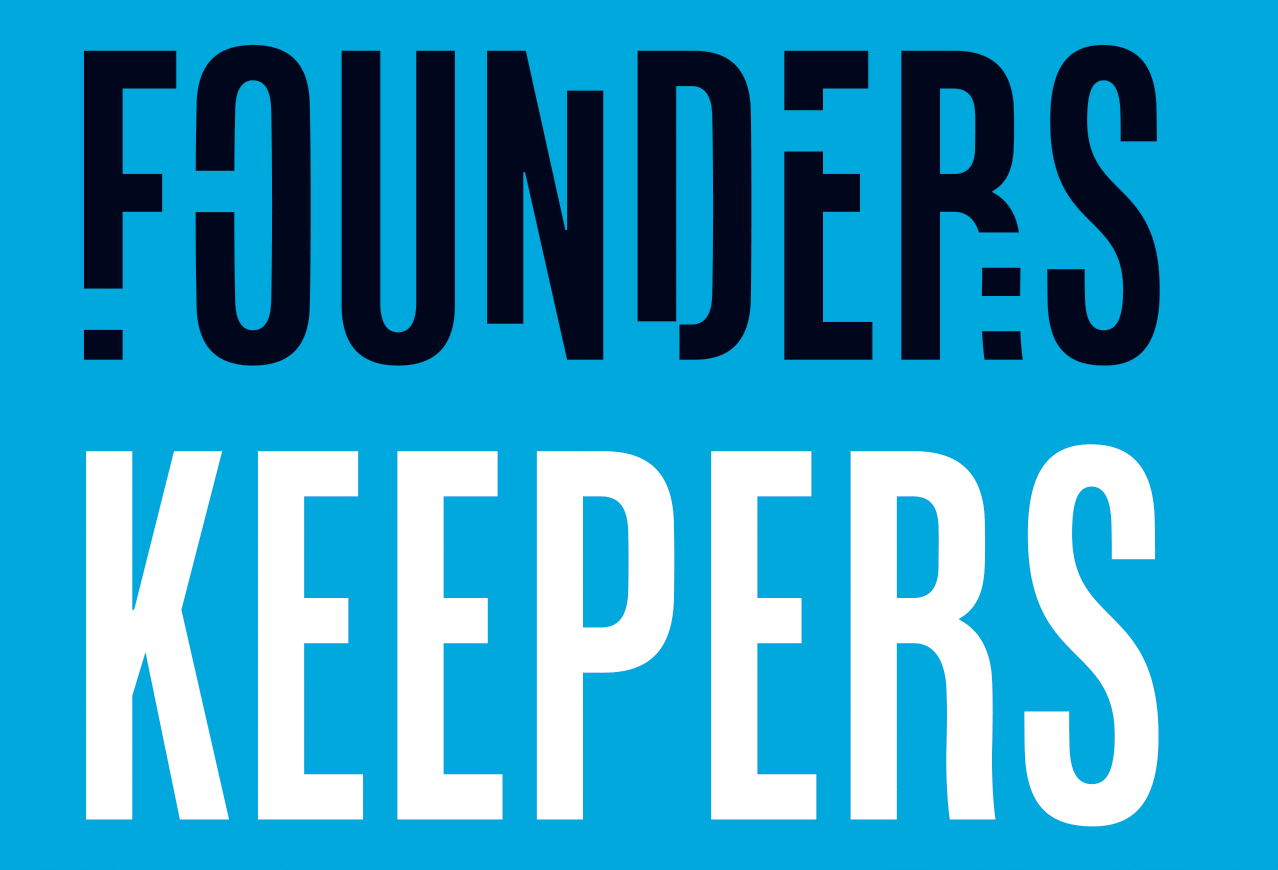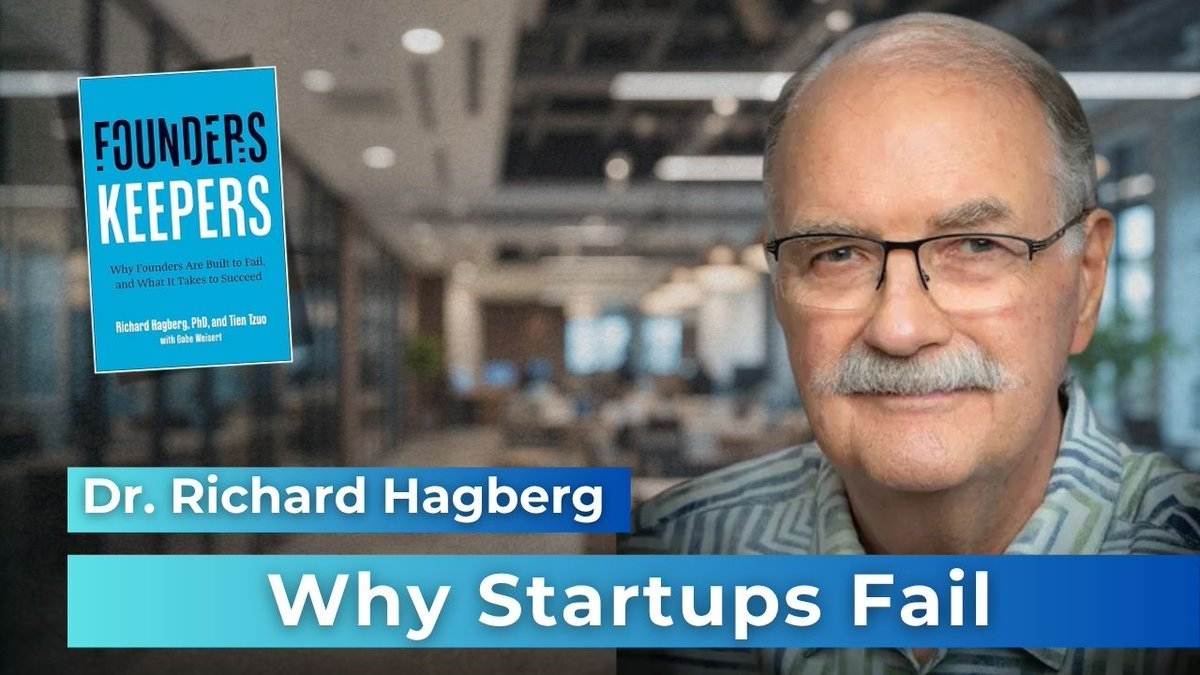Article
Breaking Free from Founder Mode: The Power of Delegation for Startup Growth
October 23, 2024
Why Founders Fail to Scale: The Myth of Founder Mode and the Power of Delegation

In startup culture, there's a myth that refuses to die—a myth that the founder's obsessive control, micromanagement, and relentless involvement in every aspect of their business is what guarantees their success. Known as "Founder Mode," this mindset is seen as an essential ingredient in the early days, where the sheer hustle and hands-on approach of the founder make or break the company. But here's the twist:
what made you successful in the beginning might be the very thing that causes your downfall when it's time to scale.
Through extensive research on 122 startup founders, we uncovered a fascinating—and provocative—truth: most founders are terrible at delegating and empowering their teams. This is more than just a bad habit. It's a fatal flaw, one that sabotages not only the founder's leadership but also the company’s ability to grow beyond its early-stage scrappiness. Writing my soon to be released book, “Founders Keeper” forced me to look at my own behavior as a typical founder. I didn’t intend it to be autobiographical but when I spend two years diving into the data on the personality and behavior of founders, it became clear that I fell into the same trap that the statistical analysis revealed. I was part of the problem. I had to face the facts.
The Founder Mode Trap The core of this myth is the notion that founders must remain in control of everything. After all, many founders kick-started their companies through grit, instinct, and a vision so clear that they believed no one could possibly execute it better than them. In the initial phases, this hands-on approach—what many call micromanagement—might be necessary. Founders are often involved in everything from product design to hiring, and their omnipresence ensures that their baby, their startup, aligns with their vision. The problem begins when this mode of operating becomes the default, long after it's needed.
Founder Mode becomes a trap, one that inhibits growth and stifles innovation. In our research, 58% of founders were poor at delegating according to their 360 feedback. That means more than half of founders are bottlenecking their own companies, undermining their teams, and ironically, sabotaging the very success they work so hard to achieve.
Founder Mode Feeds the Ego Let’s be brutally honest: Founder Mode feels good. It feeds the ego. Being in the middle of everything reinforces the belief that the company is nothing without the founder’s constant supervision. And for a while, this narrative holds. After all, it’s intoxicating to believe that your relentless control is what keeps the ship afloat. But the reality? This is an illusion.
Micromanagement, at its heart, is a form of insecurity. Founders who struggle to delegate don’t trust others to do the job as well as they would. As a result, they hover, second-guess, and override decisions made by their team. This creates a culture of disempowerment, where team members feel like their contributions are meaningless because, ultimately, the founder will step in and "fix" everything. Over time, the best talent flees, tired of being undermined and smothered. And who can blame them? No one wants to be micromanaged, least of all the high performers you need to scale your company.
The Cost of Micromanagement: Your Team, Innovation, and Sanity
Let’s break down the real costs of staying in Founder Mode:
A Misconception That Hurts: Founder Mode = Success
Here’s where the rubber meets the road: Founder Mode might have helped you survive the early days, but it will kill you in the scaling phase. It’s a myth that staying in Founder Mode ensures quality, vision, and success. In fact, our research shows that founders who can effectively delegate and empower their teams outperform those who don’t —in virtually every important metric, from team satisfaction to company growth.
Let’s look at what makes a good delegator based on our research. Founders who delegate well:
The Harsh Reality: If You Can’t Delegate, You Won’t Scale
One of the most provocative findings from our research is that founders who can’t delegate are stuck in a never-ending loop of mediocrity. They might see initial success, but they never break through to the next level. Their inability to let go creates a bottleneck that slows everything down—product development, sales, hiring, you name it.
The numbers back this up: Good delegators achieve better financial outcomes. They build stronger teams, foster innovation, and create a culture of accountability and trust. These founders don’t just build companies; they build scalable, self-sufficient organizations. Bad delegators, on the other hand, stagnate. Their refusal to let go of control keeps them and their companies small.
How to Break Free from Founder Mode
Transitioning out of Founder Mode isn’t easy. It’s an uncomfortable process, often requiring founders to confront their deepest fears—fears of losing control, making mistakes, or failing. But it’s necessary. Here’s how to break free:
The New Paradigm: Empowerment Is the Real Power
If Founder Mode is the crutch that gets startups off the ground, then delegation and empowerment are the engines that scale them. It’s not about micromanaging every detail; it’s about building a team that can run without you. In the end, the most successful founders are the ones who make themselves dispensable. They build teams, processes, and cultures that don’t rely on their constant involvement. That’s the true mark of leadership.
So the next time someone tells you that Founder Mode is the key to success, challenge that assumption. Real success doesn’t come from controlling everything—it comes from empowering others to take control.
Through extensive research on 122 startup founders, we uncovered a fascinating—and provocative—truth: most founders are terrible at delegating and empowering their teams. This is more than just a bad habit. It's a fatal flaw, one that sabotages not only the founder's leadership but also the company’s ability to grow beyond its early-stage scrappiness. Writing my soon to be released book, “Founders Keeper” forced me to look at my own behavior as a typical founder. I didn’t intend it to be autobiographical but when I spend two years diving into the data on the personality and behavior of founders, it became clear that I fell into the same trap that the statistical analysis revealed. I was part of the problem. I had to face the facts.
The Founder Mode Trap The core of this myth is the notion that founders must remain in control of everything. After all, many founders kick-started their companies through grit, instinct, and a vision so clear that they believed no one could possibly execute it better than them. In the initial phases, this hands-on approach—what many call micromanagement—might be necessary. Founders are often involved in everything from product design to hiring, and their omnipresence ensures that their baby, their startup, aligns with their vision. The problem begins when this mode of operating becomes the default, long after it's needed.
Founder Mode becomes a trap, one that inhibits growth and stifles innovation. In our research, 58% of founders were poor at delegating according to their 360 feedback. That means more than half of founders are bottlenecking their own companies, undermining their teams, and ironically, sabotaging the very success they work so hard to achieve.
Founder Mode Feeds the Ego Let’s be brutally honest: Founder Mode feels good. It feeds the ego. Being in the middle of everything reinforces the belief that the company is nothing without the founder’s constant supervision. And for a while, this narrative holds. After all, it’s intoxicating to believe that your relentless control is what keeps the ship afloat. But the reality? This is an illusion.
Micromanagement, at its heart, is a form of insecurity. Founders who struggle to delegate don’t trust others to do the job as well as they would. As a result, they hover, second-guess, and override decisions made by their team. This creates a culture of disempowerment, where team members feel like their contributions are meaningless because, ultimately, the founder will step in and "fix" everything. Over time, the best talent flees, tired of being undermined and smothered. And who can blame them? No one wants to be micromanaged, least of all the high performers you need to scale your company.
The Cost of Micromanagement: Your Team, Innovation, and Sanity
Let’s break down the real costs of staying in Founder Mode:
- Talent Bleed: Talented individuals don’t stick around in environments where they aren’t trusted. Our research found that poor delegators have higher employee turnover , precisely because they suffocate creativity and initiative. In contrast, good delegators—only 41% of the founders in our study—create environments where people thrive.
- Stunted Growth: As companies scale, the complexity of operations demands a shift in leadership style. The founder can no longer be involved in every decision. Micromanagement doesn’t scale. What does? Delegation and empowerment. Companies where founders effectively delegate have higher multiples of invested capital and perform better overall.
- Strategic Blindness: Founders stuck in the weeds lose sight of the bigger picture. They spend their time firefighting rather than focusing on high-level strategy, innovation, or scaling. In doing so, they miss opportunities to grow, adapt, and pivot. They also lose valuable time building key partnerships and relationships that are vital for long-term success.
- Burnout: Trying to do it all is a one-way ticket to burnout. Founders who fail to delegate often find themselves exhausted, stretched thin, and overwhelmed. It’s unsustainable. The irony? The very act of trying to control everything leads to losing control over the most important thing: the ability to lead effectively.
A Misconception That Hurts: Founder Mode = Success
Here’s where the rubber meets the road: Founder Mode might have helped you survive the early days, but it will kill you in the scaling phase. It’s a myth that staying in Founder Mode ensures quality, vision, and success. In fact, our research shows that founders who can effectively delegate and empower their teams outperform those who don’t —in virtually every important metric, from team satisfaction to company growth.
Let’s look at what makes a good delegator based on our research. Founders who delegate well:
- Trust their teams: They place a high level of confidence in their employees, empowering them to make decisions and take ownership of their work.
- Provide clear direction: They set high-level goals and let their teams figure out the best way to achieve them.
- Know when to step in: Good delegators don’t abandon ship. They know when their expertise is needed but avoid getting involved in every little decision.
- Focus on long-term growth: Instead of focusing on daily tasks, they dedicate their time to strategy, vision, and scaling.
The Harsh Reality: If You Can’t Delegate, You Won’t Scale
One of the most provocative findings from our research is that founders who can’t delegate are stuck in a never-ending loop of mediocrity. They might see initial success, but they never break through to the next level. Their inability to let go creates a bottleneck that slows everything down—product development, sales, hiring, you name it.
The numbers back this up: Good delegators achieve better financial outcomes. They build stronger teams, foster innovation, and create a culture of accountability and trust. These founders don’t just build companies; they build scalable, self-sufficient organizations. Bad delegators, on the other hand, stagnate. Their refusal to let go of control keeps them and their companies small.
How to Break Free from Founder Mode
Transitioning out of Founder Mode isn’t easy. It’s an uncomfortable process, often requiring founders to confront their deepest fears—fears of losing control, making mistakes, or failing. But it’s necessary. Here’s how to break free:
- Start Small: Begin by delegating low-risk tasks. As you build trust in your team, gradually hand off more responsibility.
- Hire Smart: Surround yourself with talented people you trust. Invest in leaders who can drive the company forward without your constant oversight.
- Define Clear Metrics: Set measurable goals for your team and focus on the outcomes, not the process. Let your team figure out how to get there.
- Embrace Mistakes : Understand that people will make mistakes, and that’s okay. It’s part of the learning and growth process.
- Focus on Leadership, Not Control: Shift your focus from doing to leading. Spend your time on vision, strategy, and building relationships.
The New Paradigm: Empowerment Is the Real Power
If Founder Mode is the crutch that gets startups off the ground, then delegation and empowerment are the engines that scale them. It’s not about micromanaging every detail; it’s about building a team that can run without you. In the end, the most successful founders are the ones who make themselves dispensable. They build teams, processes, and cultures that don’t rely on their constant involvement. That’s the true mark of leadership.
So the next time someone tells you that Founder Mode is the key to success, challenge that assumption. Real success doesn’t come from controlling everything—it comes from empowering others to take control.
share this
Related Articles
Related Articles

The Nicest Boss in the World He was adored. He remembered birthdays, checked in on people’s families, and stayed late helping fix slides no one asked him to touch. His team called him “the best boss we’ve ever had.” He was also running on fumes. Behind the warm smile was a leader quietly burning out — drowning in everyone else’s problems, too empathetic for his own good. If you’re a leader who prides yourself on caring deeply, this might sting a little: empathy, taken too far, becomes control in disguise. Empathy’s Secret Shadow Empathy is essential for leadership. It builds loyalty, safety, and trust. But the same trait that makes people feel seen can also make them dependent. When you can’t tolerate someone else’s discomfort, you start protecting them from it. You step in to fix, to soothe, to rescue. It looks noble. It feels generous. But it quietly steals agency — theirs and yours. Your team stops growing because you’re doing their emotional labor. You stop leading because you’re managing feelings instead of outcomes. That’s the hidden cost of care. The Emotional Guilt Loop Over-empathetic leaders live in a constant tug-of-war between compassion and guilt. They think: “They’re already stretched — I can’t pile more on.” “If I push harder, I’ll seem uncaring.” “I’ll just do it myself; it’s easier.” Sound familiar? That’s not empathy anymore. That’s guilt masquerading as kindness. And guilt makes terrible business decisions. Because guilt doesn’t guide you toward what’s right. It just steers you away from what feels uncomfortable. A Founder’s Story One founder I coached, let’s call her Lina, led with heart. She built her company around “people first.” And she meant it. But somewhere along the way, “people first” turned into “me last.” She couldn’t say no. She kept saving underperformers, approving vacations during crunch time, rewriting others’ work to spare them stress. Her team adored her — until they didn’t. Because beneath her helpfulness was quiet resentment. And resentment always leaks. The breakthrough came when she realized something simple but hard: “I was protecting people from learning the hard parts of growth.” That’s when she started leading again instead of parenting. When Caring Becomes Control Here’s the paradox: the more you care, the more you risk over-controlling. You jump in to fix not because you don’t trust them, but because you feel for them. It’s empathy turned inward — I can’t stand watching them struggle. But leadership isn’t about eliminating discomfort. It’s about using it wisely. People grow by stretching, not by being spared. When you save someone from every failure, you’re also saving them from competence. The Biology of Burnout Chronic empathy triggers chronic stress. When you absorb other people’s emotions all day, your nervous system never gets a break. You start mirroring everyone’s anxiety like an emotional amplifier. Your brain thinks you’re in crisis — even when you’re not. That’s why over-caring leaders are often the first to burn out. Their compassion becomes constant cortisol. The irony? The leaders who want to create safety for others end up unsafe themselves. How to Care Without Carrying Feel, then filter. It’s okay to feel someone’s frustration. Just don’t keep it. Ask: “Is this mine to hold?” Help through accountability. Say, “I know this is tough, and I also need you to take ownership.” The and matters. Let discomfort be developmental. When a team member struggles, resist rescuing. Stay present, not protective. Coach before you comfort. Instead of “Don’t worry,” try, “What do you think your next move is?” Reframe empathy as empowerment. Caring isn’t about absorbing pain; it’s about believing people can handle it. Funny but True One exec I worked with told me, “Every time I stop helping, I feel like a jerk.” I said, “No — you feel like a leader. It just takes a while to tell the difference.” He laughed and said, “So… you’re telling me leadership feels bad at first?” I said, “Exactly. Growth always does.” The Cultural Ripple Effect When leaders overfunction, teams underfunction. When leaders hold space instead of taking space, teams rise. Empathy should expand others, not consume you. The healthiest cultures balance care and candor — support and stretch. They normalize struggle as part of the process instead of something to be hidden or rescued. That’s what real compassion looks like in motion. The Maturity of Tough Empathy Empathy without boundaries is exhaustion. Empathy with boundaries is wisdom. The mature version of empathy doesn’t say, “I’ll protect you.” It says, “I believe you can handle this — and I’ll walk beside you while you do.” That’s not cold. That’s developmental. Your Challenge This Week Notice where you’re rescuing someone instead of coaching them. Pause before you step in. Ask yourself, Am I helping because they need it — or because I need to feel helpful? Then take one small risk: let them handle it. They’ll probably surprise you. And you’ll feel lighter than you have in months. Final Word Caring is beautiful. It’s what makes you human. But unchecked empathy turns leaders into emotional pack mules — carrying what was never theirs to bear. Real leadership is still full of heart. It just remembers that compassion without accountability isn’t love. It’s fear. And the moment you stop rescuing everyone, you finally start freeing them — and yourself.s)

The Smart Leader’s Blind Spot It’s strange how often the smartest people make the worst decisions under pressure. They don’t lose IQ. They lose perspective. I’ve seen this happen more times than I can count. A sharp, decisive executive starts second-guessing every move. They overanalyze, overwork, and overcontrol — all in the name of being “thorough.” They think they’re being rational. But underneath the spreadsheets and meetings is something far less logical. It’s fear. The Fear That Doesn’t Look Like Fear We think of fear as panic — sweating, shaking, obvious. But most leadership fear hides behind competence. It shows up as perfectionism, busyness, overcommitment, indecision. It sounds like, “Let’s get more data.” “Let’s not rush this.” “Let’s keep this one close.” That’s not analysis. That’s avoidance with a better vocabulary. When fear runs the show, the goal subtly shifts from making the right decision to avoiding the wrong one. And those two things are worlds apart. The Cost of Fear-Based Leadership When leaders operate from fear, everything tightens. They stop listening. They rush to defend. They play small when the company needs boldness. They keep people who are loyal over people who are competent — because loyalty feels safer. And here’s the real tragedy: the team starts copying the fear. They become cautious, compliant, quiet. Pretty soon, no one’s leading anymore. They’re all managing risk — mostly emotional risk. A CEO’s Moment of Truth One CEO I coached — brilliant, confident, deeply human — was terrified of being wrong in front of his board. He masked it well. On the outside: decisive. Inside: a constant hum of anxiety. After a tough quarter, he admitted, “I realized half my decisions weren’t based on strategy — they were based on protecting my image.” That moment of honesty was the start of his maturity curve. Once he could name the fear, it stopped running his show. He didn’t become fearless. He became aware. And awareness is what turns reaction into wisdom. Why Fear Feels Safer Than Clarity Fear has a strange way of convincing us it’s caution. Caution whispers, “Slow down and look.” Fear screams, “Don’t move.” The first sharpens judgment. The second paralyzes it. And the more we listen to fear, the more it disguises itself as prudence. That’s why emotional maturity isn’t about suppressing fear. It’s about being able to say, “Ah, that’s fear talking — not fact.” How Fear Distorts the Mind Here’s what happens when fear hijacks leadership: Tunnel vision: You fixate on the immediate threat and forget the big picture. Confirmation bias: You start looking for data that validates your anxiety. Short-termism: You make safe decisions that feel good now and cause pain later. Blame shifting: You protect your ego by pushing ownership outward. The mind gets smaller. The leader gets reactive. The company gets stuck. The Maturity Shift Emotional maturity isn’t about being unshakable. It’s about staying curious in the presence of fear. Mature leaders don’t pretend they’re fearless. They just don’t let fear make the decisions. They pause, breathe, and ask, “What part of this is data, and what part is my insecurity talking?” That single question can change everything. A Founder’s Story A founder I worked with once said, “I’m not afraid — I just have high standards.” But as we unpacked it, he realized those “high standards” were actually a way to control outcomes. He feared disappointment — his own and others’. When he finally stopped trying to protect his reputation and started protecting his clarity, his decisions got faster and cleaner. The business didn’t just grow — it started breathing again. Because when you stop trying to look right, you finally have room to be right. Funny, But True I once asked a CEO what he’d do differently if he weren’t afraid of failing. He said, “Probably the same things I’m doing now — just with less Advil.” That’s the thing: most leaders already know what to do. Fear just makes it hurt more. How to Lead Without Fear (Even When It’s There) Name it early. The sooner you recognize fear, the less power it has. Ask yourself, “What’s the story fear’s telling me right now?” Reframe mistakes as tuition. You’ll still pay for errors — might as well learn something from them. Separate identity from outcome. A bad decision doesn’t mean a bad leader. It means a leader who’s still learning — like everyone else. Keep one truth-teller nearby. Someone who loves you enough to tell you when you’re acting from ego. Practice micro-bravery. Tell one hard truth a day. Say “I don’t know” once a week. Let discomfort become strength training. The Paradox of Fear Fear doesn’t make you weak. It means you care. But if you never face it, it becomes your compass — and it always points backward. Courage, maturity, clarity — they’re not opposites of fear. They’re what happen when you stop running from it. Your Challenge This Week Next time you feel that knot in your stomach — before a board meeting, a tough conversation, a high-stakes call — pause. Ask yourself: What am I afraid might happen? Then ask: What might happen if I act from clarity instead of fear? That’s not therapy. That’s leadership hygiene. Final Word The mark of maturity isn’t fearlessness. It’s self-awareness. You can’t control your fear. But you can choose whether it sits in the driver’s seat or the passenger’s. Great leaders don’t wait for fear to disappear. They lead with it beside them — quietly, respectfully — but never in charge.

The Charisma Illusion Charisma gets all the press. It fills conference rooms, wins funding rounds, and dominates the LinkedIn highlight reel. We treat it like the gold standard of leadership — as if volume equals vision. But charisma is a sugar high. It spikes energy, then crashes trust. Composure, on the other hand — quiet, grounded, centered composure — is the kind of influence that lasts. It doesn’t light up a room; it settles one. When things go sideways, it’s not the charismatic leader people look for. It’s the calm one. The Crisis Test Picture this. The product just failed. The client’s furious. Your team’s pacing like trapped cats. Two leaders walk in. One storms into action — loud, fast, “What the hell happened here?” The other walks in slowly, looks around, and says, “Okay, let’s breathe. What do we know so far?” The first one gets attention. The second one gets results. That’s emotional geometry — the calmest person in the room reshapes everyone else’s state. Why Calm Is the Real Power When you stay composed, you’re not just managing your emotions — you’re regulating the entire system. Here’s the neuroscience behind it: people mirror the nervous system of whoever has the most authority. If you’re grounded, they sync to your rhythm. If you’re frantic, they sync to that instead. You don’t need to lecture anyone on resilience. You just have to model it. It’s not charisma that makes people trust you; it’s the quiet sense that you’re not going to lose your mind when things get hard. Charisma’s Half-Life Charisma is a spark. It can ignite a team — but if there’s no composure beneath it, the whole thing burns out. You’ve seen this movie before: the leader who rallies everyone with a passionate all-hands speech, then disappears into reaction mode when things get messy. Charisma without composure is like caffeine without sleep. You’re awake, but you’re not steady. Composure doesn’t get the applause. It gets the loyalty. A Founder’s Story One founder I worked with — I’ll call him David — was known for being a “high-voltage” guy. He could pitch an investor, fire up a crowd, or talk anyone into anything. But his team? They were walking on eggshells. His energy filled every room, but it left no oxygen for anyone else. During one session, I asked, “When you raise your voice, what happens to theirs?” He went quiet. That was the moment he understood that his passion — the thing he was most proud of — had become the team’s anxiety. A year later, his team described him differently: “He’s still intense, but steady. We trust him more now.” He didn’t lose charisma; he layered it with composure. The Calm Before the Influence Here’s what composure actually looks like: You listen longer. Because real influence starts with attention, not argument. You breathe before reacting. That pause isn’t weakness; it’s power management. You let silence do the work. Charisma fills every space; composure creates space for others to step in. You own your tone. You realize your sighs, your speed, your face — they’re all communication tools whether you intend them or not. You choose steadiness over certainty. People don’t need you to know everything. They just need to know you’re okay not knowing. Funny But True A client once told me, “When I’m calm in a meeting, people assume I’m hiding something.” I said, “Good. Let them wonder.” That’s how unfamiliar calm has become. In some cultures, composure looks radical — even suspicious. But it’s exactly what people crave in a world that never shuts up. Why Charisma Is Easier (and More Addictive) Charisma gets feedback. You see the energy rise, you feel the applause. It’s visible. Composure feels invisible — until you lose it. No one thanks you for staying calm during a crisis. But they remember it when deciding whether to follow you into the next one. That’s why maturity in leadership means getting comfortable with the quiet wins — the meeting that didn’t spiral, the argument that didn’t happen, the team that stayed focused because you did. The Emotional Geometry in Practice Think of composure as geometry because emotions move through space. When you enter a room, you alter its emotional shape. If you radiate calm, people’s shoulders drop. Their thinking widens. They start contributing. If you radiate stress, the room contracts. People shrink. Ideas vanish. Influence isn’t what you say. It’s the energy field you create. Your Challenge This Week Before your next high-stakes meeting, pause outside the door. Take one deep breath and ask yourself: What energy does this room need from me right now? Then bring only that. Nothing more. You’ll be amazed how fast everything slows down when you do. Final Word Charisma captures attention. Composure builds trust. One is about how loudly you shine; the other is about how steadily you glow. The leader who can stay centered when everyone else is spinning doesn’t just have influence — they are the influence. And that’s the kind of power that never burns out.
STAY UP TO DATE
GET PATH'S LATEST
Receive bi-weekly updates from the church, and get a heads up on upcoming events.
Contact Us








